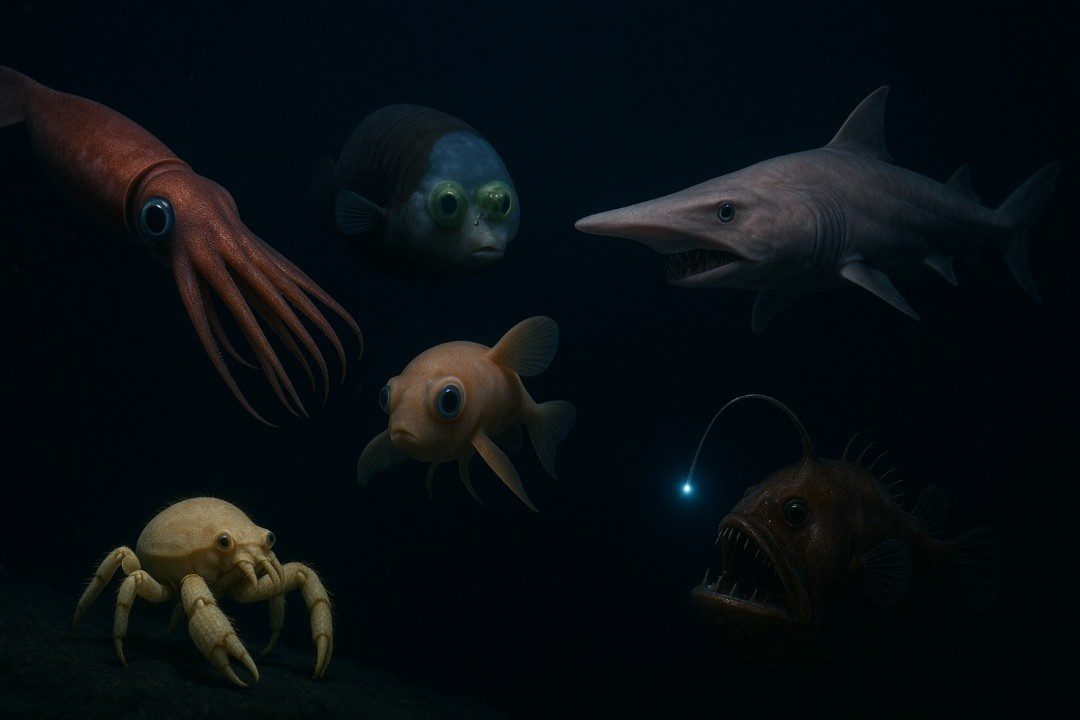The ocean abyss, a realm of perpetual darkness and crushing pressure, is home to some of the most bizarre and fascinating life forms on Earth. This largely unexplored frontier, reaching depths beyond human imagination, reveals creatures that defy expectations and challenge our understanding of biology. From transparent predators to glowing hunters, the denizens of the deep ocean illustrate the extremes to which life can adapt in pursuit of survival.
1. Goblin Shark

The goblin shark is often described as a “living fossil” with a lineage stretching back 125 million years. Its protrusible jaws can snap forward to catch prey, revealing needle-like teeth. Unlike most sharks, its skin has a pinkish hue due to visible blood vessels.
This elusive creature inhabits depths up to 1,300 meters and remains mysterious, with only rare sightings and captures recorded. Its unique adaptations help it thrive in the deep sea’s pitch-black, high-pressure conditions. The goblin shark is a striking example of deep-sea evolution at its most dramatic (source).
2. Dumbo Octopus
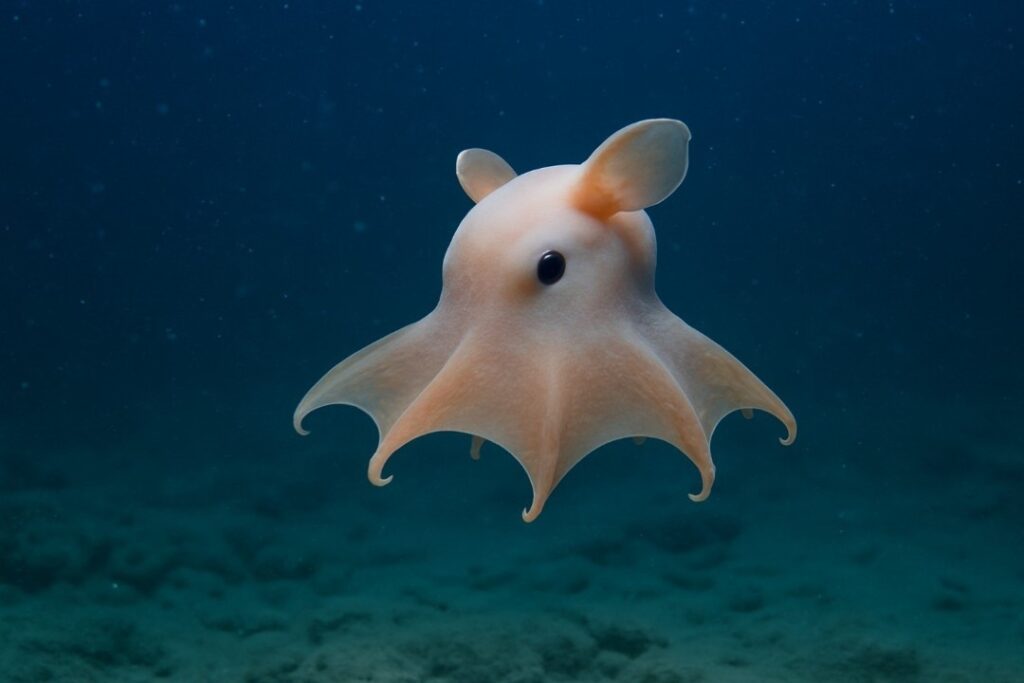
Named for its ear-like fins resembling Disney’s Dumbo, the dumbo octopus glides through the deep ocean with gentle, undulating movements. Living at depths ranging from 400 to over 4,000 meters, it is the deepest-dwelling of all known octopus species.
The dumbo octopus can withstand immense pressure and cold temperatures, and its soft body allows it to maneuver through tight spaces. These octopuses feed on worms and crustaceans, and their charming appearance belies a highly adapted predator’s lifestyle.
3. Giant Squid
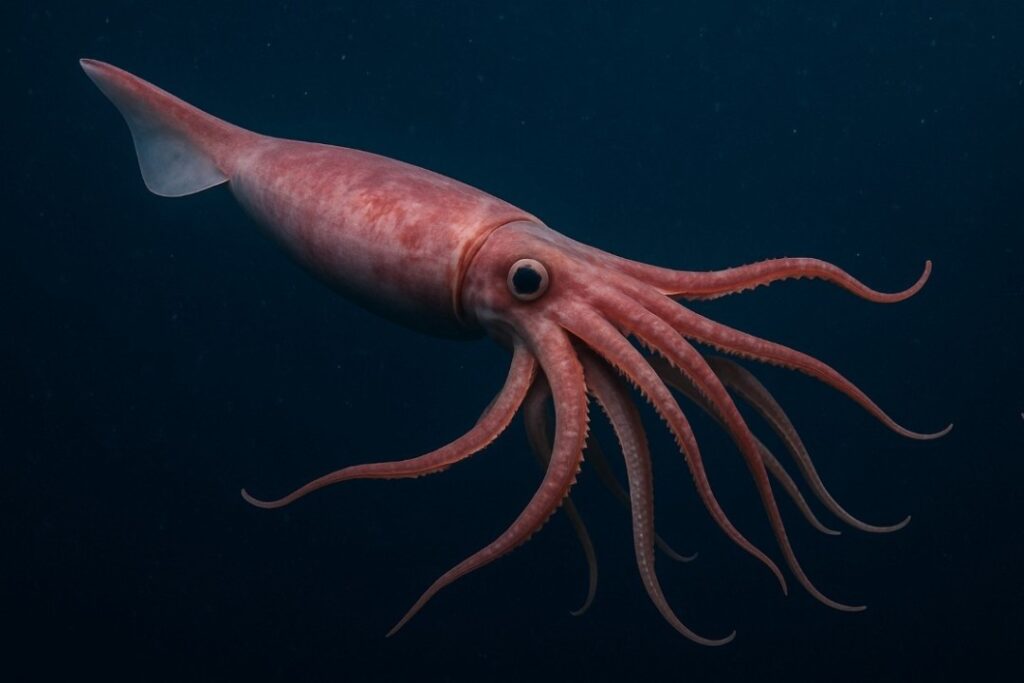
Once thought to be mere legend, the giant squid is a true leviathan of the deep, with some individuals reaching up to 12 meters in length. Elusive and rarely seen alive, giant squids are equipped with enormous eyes—some as large as dinner plates—to spot prey in near-total darkness. Their tentacles are lined with suckers and sharp hooks for capturing prey. Giant squids’ mysterious nature has made them a subject of fascination and study among marine biologists worldwide (source).
4. Barreleye Fish
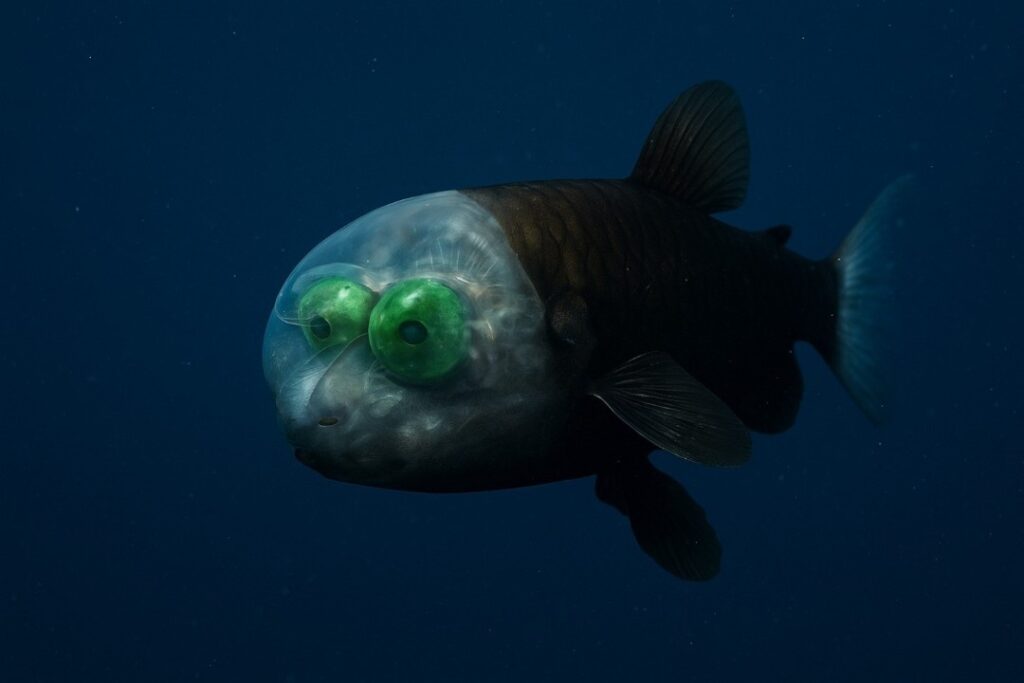
Barreleye fish are instantly recognizable due to their transparent heads, which allow their tubular eyes to collect maximum light. These eyes can rotate within their socket, giving the fish a panoramic view and the ability to spot prey or predators above. Living at depths up to 800 meters, the barreleye’s unique adaptation is a remarkable response to the darkness of the deep ocean. Its transparent dome also protects its sensitive eyes from the stingers of siphonophores, a common prey.
5. Fangtooth
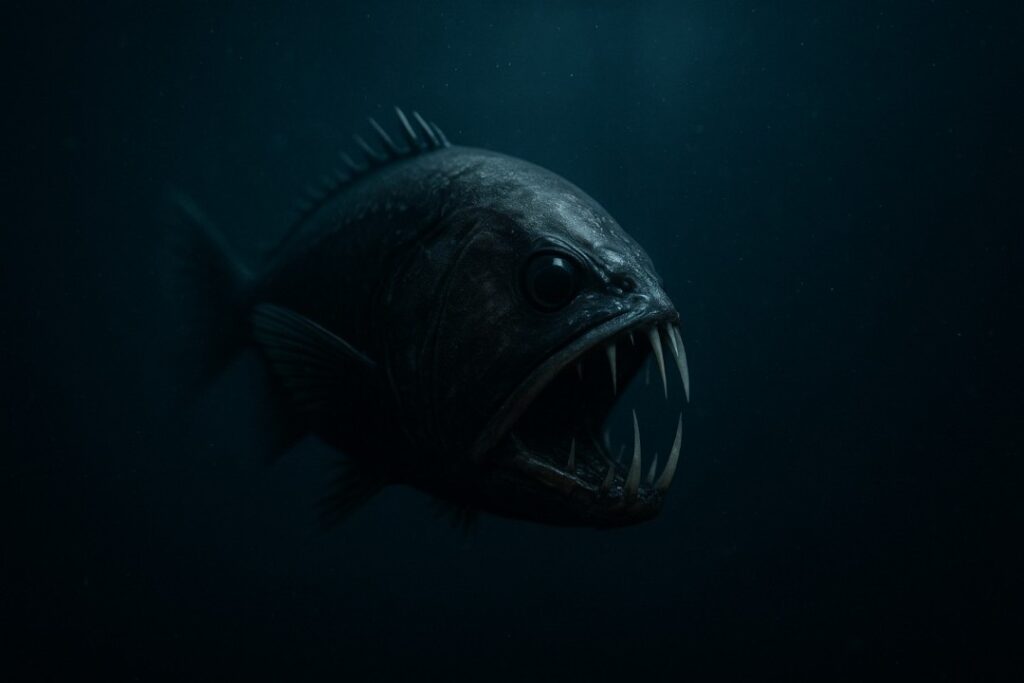
Despite its menacing appearance, the fangtooth is relatively small, usually under 18 centimeters long. It has the largest teeth relative to body size of any fish in the ocean, enabling it to impale prey with ease. Fangtooths inhabit depths as great as 5,000 meters, enduring high pressure and low temperatures. Their oversized jaws and keen hunting skills make them fearsome predators of the abyss, feeding on fish and squid that dare venture near.
6. Vampire Squid
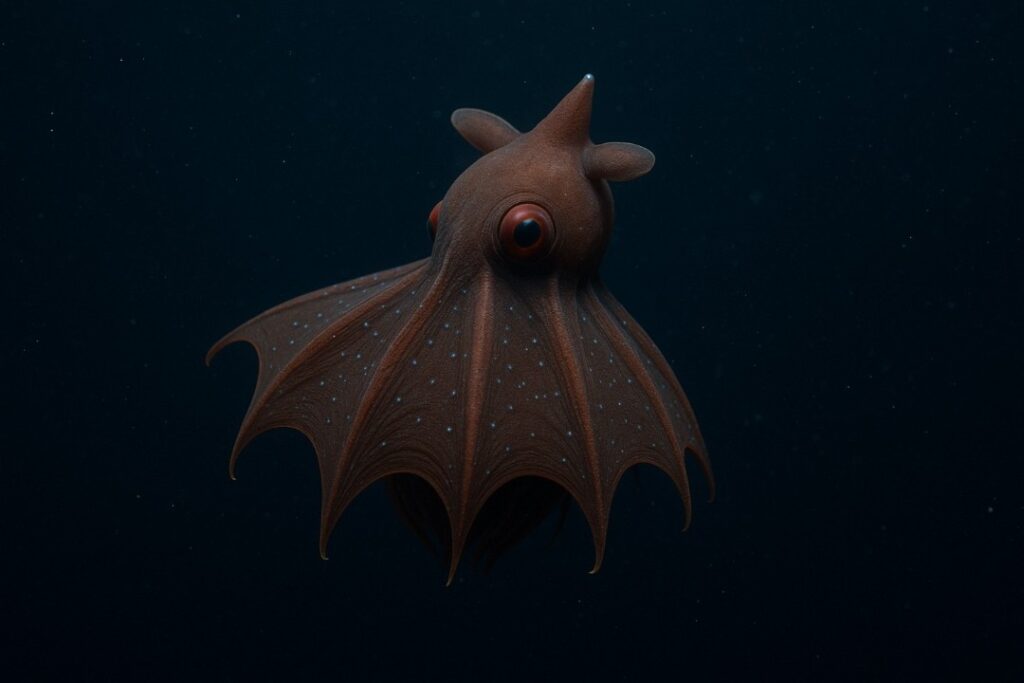
The vampire squid is neither vampire nor true squid, but its eerie appearance and crimson webbing inspire its name. Its deep red or black body, cloak-like arms, and bioluminescent abilities allow it to hide or startle predators. Living in oxygen-poor waters up to 3,000 meters deep, the vampire squid feeds on “marine snow,” the organic debris that drifts down from above. Its unique adaptations allow survival in one of the most inhospitable zones of the ocean.
7. Deep-Sea Anglerfish
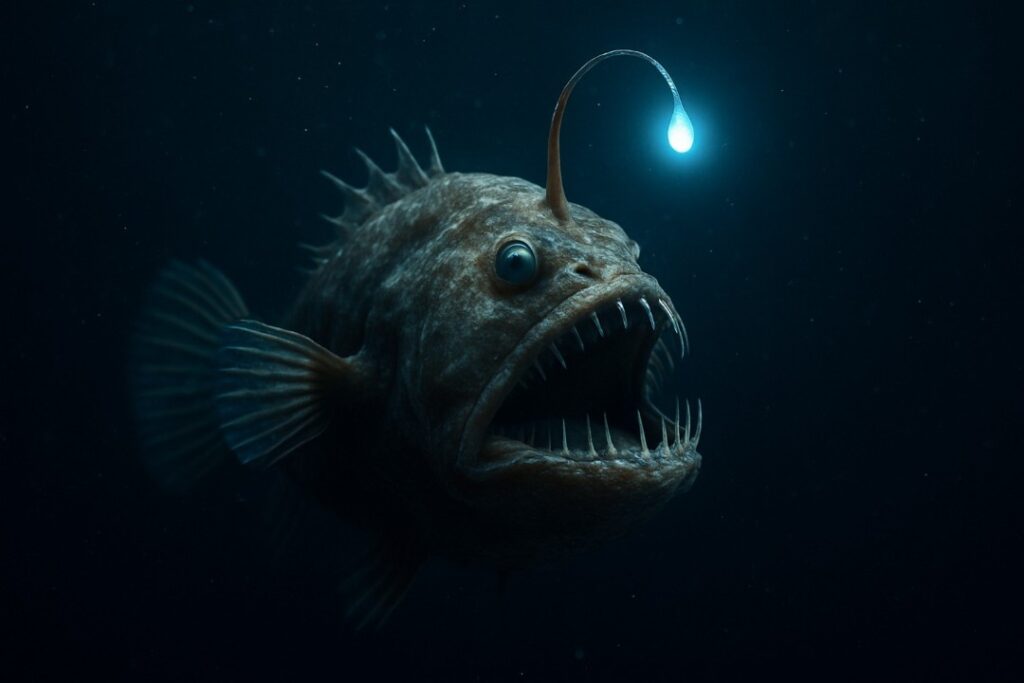
With a bioluminescent lure protruding from its head, the deep-sea anglerfish is one of the ocean’s most iconic predators. Females, much larger than males, use their glowing lure to attract prey in the dark abyss. The anglerfish’s enormous mouth and expandable stomach allow it to consume prey nearly as large as itself. Its bizarre reproductive strategy involves males fusing with females, becoming permanent parasites. The anglerfish epitomizes the strangeness and creativity of deep-sea evolution (source).
8. Gulper Eel
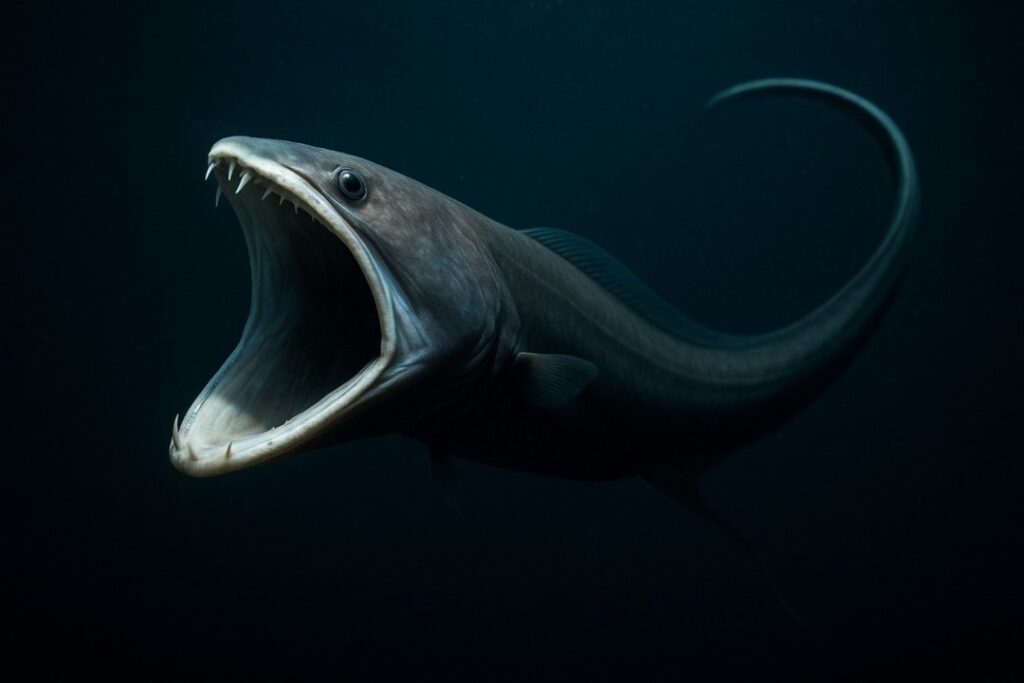
The gulper eel is known for its disproportionately large mouth, which can open wide enough to swallow prey almost as big as itself. Its whip-like tail and bioluminescent organ help it lure and capture food in the inky depths, sometimes down to 3,000 meters. This eel’s expandable jaws are an evolutionary response to scarce food sources, allowing it to opportunistically gulp down whatever prey comes its way. Its alien-like appearance has made it a subject of deep-sea fascination.
9. Yeti Crab
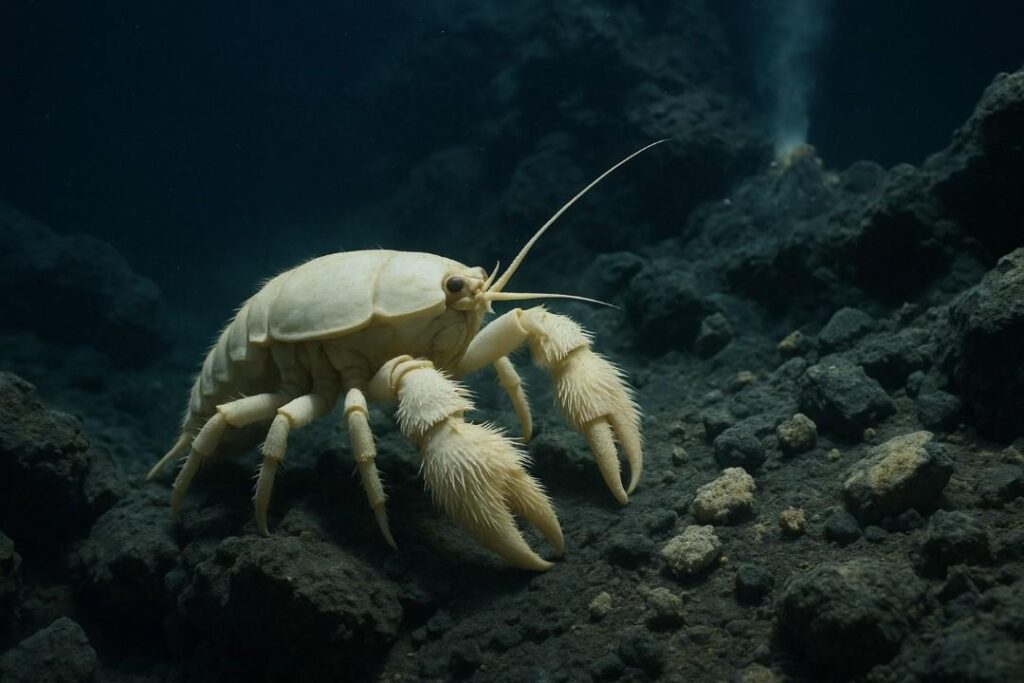
Discovered only in 2005, the yeti crab stands out for its “hairy” pincers, which are covered in filamentous bacteria. These bacteria help detoxify the water or may serve as a food source for the crab. Yeti crabs are found near hydrothermal vents, where they endure extreme temperatures and toxic chemicals. Their peculiar lifestyle and symbiotic relationship with bacteria highlight the adaptability and innovation of deep-sea life.
10. Frilled Shark
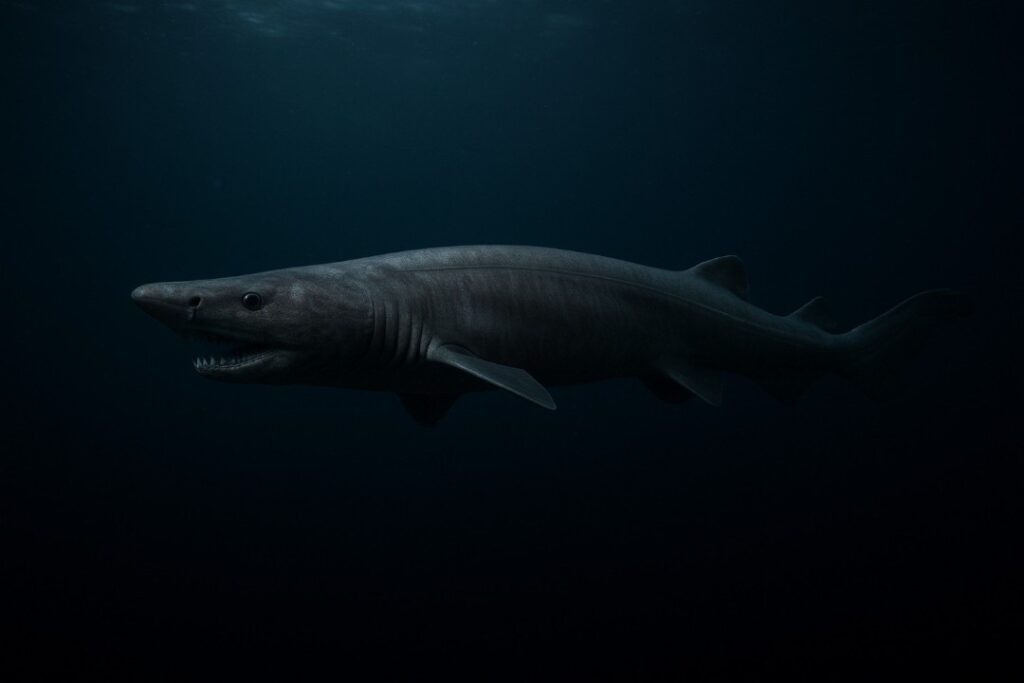
Often called a “living fossil,” the frilled shark has a body reminiscent of ancient eel-like sharks. Its 300 trident-shaped teeth arranged in 25 rows make it a formidable predator. The frilled shark lives at depths between 500 and 1,500 meters and is rarely seen by humans. Its ability to gulp prey whole and its serpentine swimming style set it apart from modern sharks, making it an evolutionary throwback in the ocean’s depths.
11. Colossal Squid
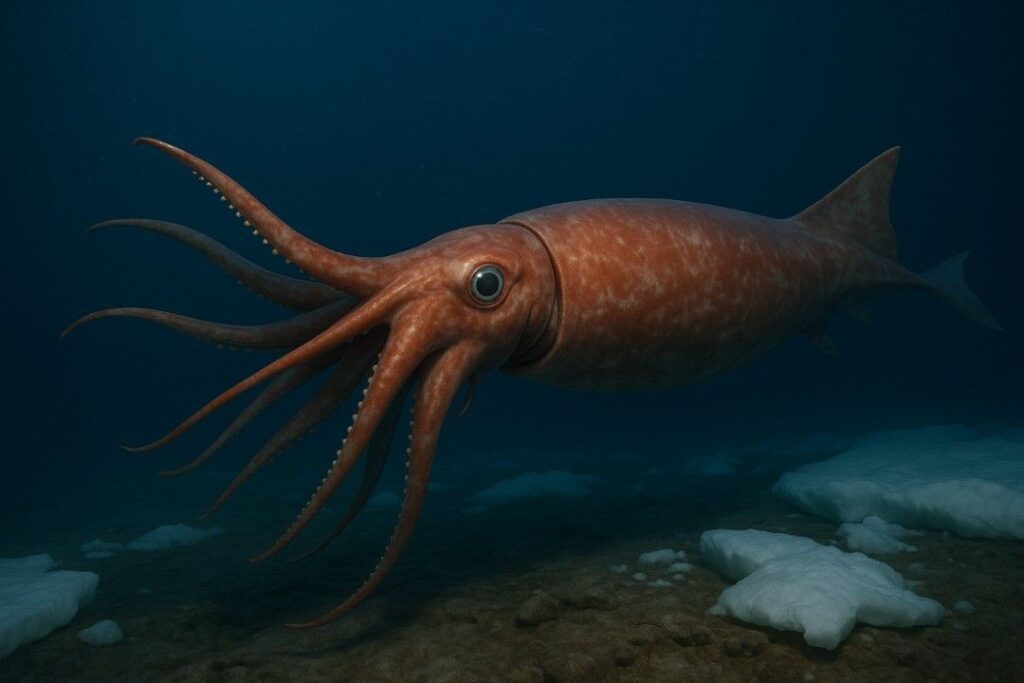
The colossal squid, not to be confused with the giant squid, holds the record for the largest invertebrate by mass. Found in the frigid waters of the Southern Ocean, this creature can weigh up to 500 kilograms. Its arms are armed with swiveling hooks, making it a fierce hunter. The colossal squid’s massive eyes help it detect prey in the pitch-black waters, cementing its place among the deep sea’s most mysterious giants (source).
12. Black Dragonfish

The black dragonfish is a master of camouflage and deception, equipped with bioluminescent photophores along its body. These lights help lure prey and communicate with potential mates. It has a long, slender body and fang-like teeth, and the females are far larger and more menacing than the tiny, almost featureless males. Found at depths up to 2,000 meters, black dragonfish can produce their own red light, which is invisible to most deep-sea creatures.
13. Sea Pig
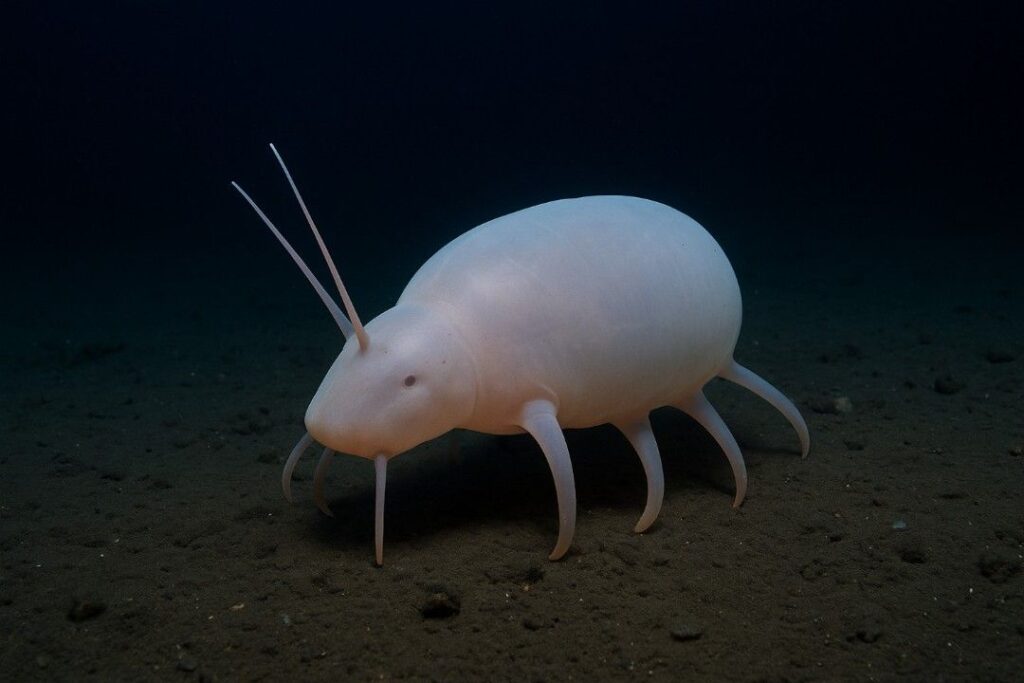
The sea pig is a type of deep-sea holothurian, or sea cucumber, known for its bulbous, translucent body and tube-like legs. Found on ocean floors at depths over 1,000 meters, sea pigs sift through sediment in search of decaying organic matter. Their appearance is alien, yet they play a vital role in recycling nutrients in the abyssal ecosystem. Sea pigs often gather in large groups, forming unusual herds across the seabed.
14. Zombie Worm (Osedax)
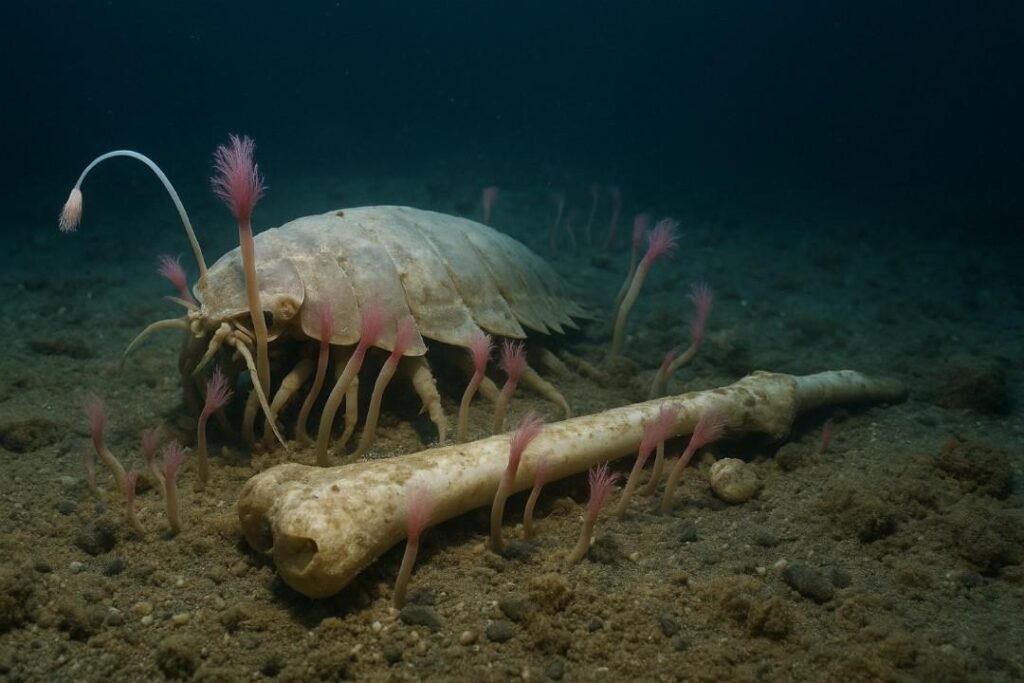
Zombie worms, or Osedax, are a unique species that feed on the bones of dead whales and other large animals. These worms lack mouths and stomachs; instead, they secrete acid to bore into bones and absorb nutrients with the help of symbiotic bacteria. Discovered in 2002, zombie worms highlight the astonishing diversity of feeding strategies in the deep sea and their importance in breaking down large organic matter on the ocean floor (source).
15. Comb Jelly (Ctenophore)
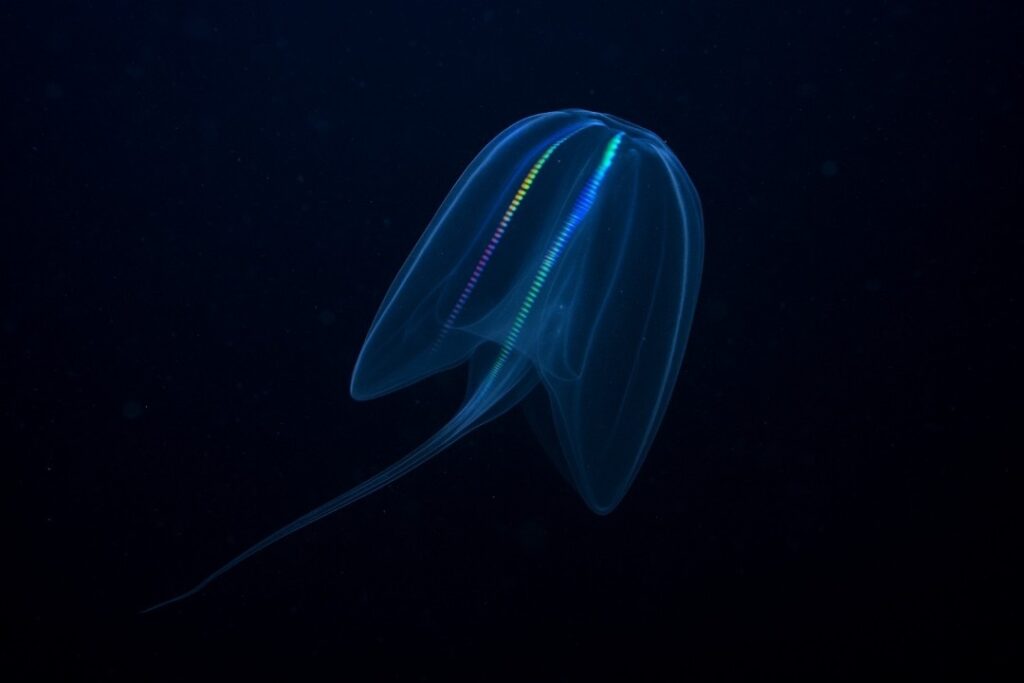
Comb jellies, or ctenophores, are mesmerizing inhabitants of the ocean abyss, propelling themselves with rows of cilia that shimmer with rainbow colors. Unlike true jellyfish, ctenophores use sticky cells rather than stinging ones to capture prey. Some species can produce light through bioluminescence, creating spectacular displays in the darkness. Their fragile, transparent bodies make them elusive to study, yet they are widespread and important members of deep-sea ecosystems.

